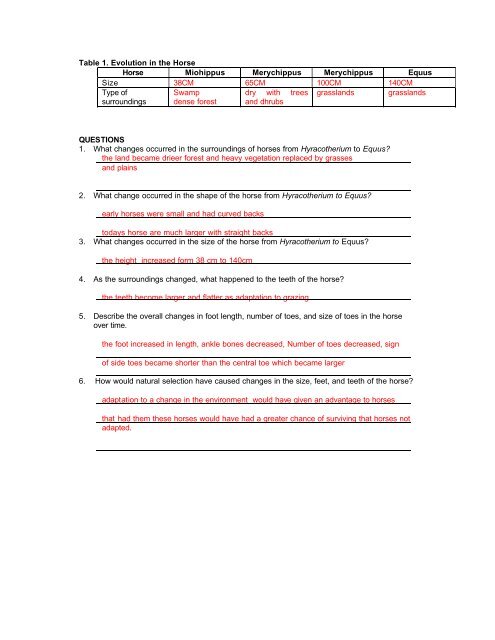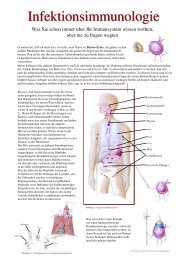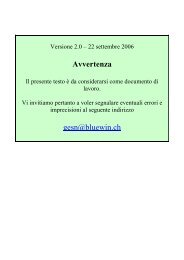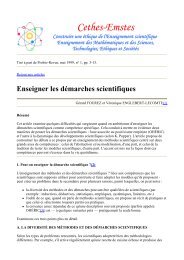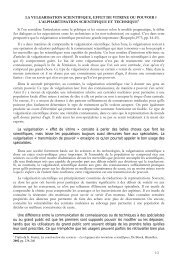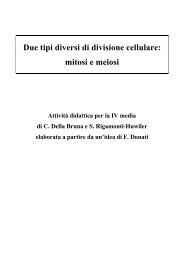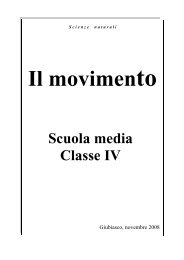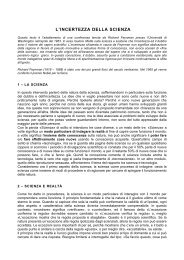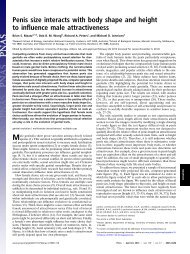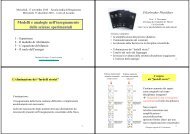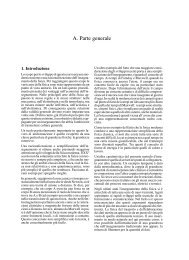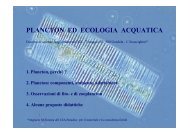Canon Paleontology Curriculum Unit 3
Canon Paleontology Curriculum Unit 3
Canon Paleontology Curriculum Unit 3
You also want an ePaper? Increase the reach of your titles
YUMPU automatically turns print PDFs into web optimized ePapers that Google loves.
Table 1. Evolution in the Horse<br />
Horse Miohippus Merychippus Merychippus Equus<br />
Size 38CM 65CM 100CM 140CM<br />
Type of<br />
Swamp<br />
dry with trees grasslands grasslands<br />
surroundings dense forest and dhrubs<br />
QUESTIONS<br />
1. What changes occurred in the surroundings of horses from Hyracotherium to Equus?<br />
the land became drieer forest and heavy vegetation replaced by grasses<br />
and plains<br />
2. What change occurred in the shape of the horse from Hyracotherium to Equus?<br />
early horses were small and had curved backs<br />
todays horse are much larger with straight backs<br />
3. What changes occurred in the size of the horse from Hyracotherium to Equus?<br />
the height increased form 38 cm to 140cm<br />
4. As the surroundings changed, what happened to the teeth of the horse?<br />
the teeth become larger and flatter as adaptation to grazing<br />
5. Describe the overall changes in foot length, number of toes, and size of toes in the horse<br />
over time.<br />
the foot increased in length, ankle bones decreased, Number of toes decreased, sign<br />
of side toes became shorter than the central toe which became larger<br />
6. How would natural selection have caused changes in the size, feet, and teeth of the horse?<br />
adaptation to a change in the environment would have given an advantage to horses<br />
that had them these horses would have had a greater chance of surviving that horses not<br />
adapted.


